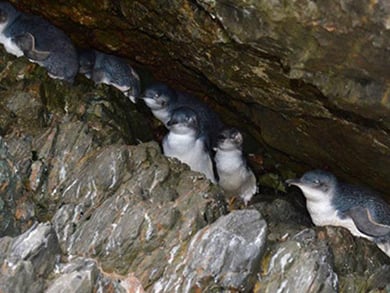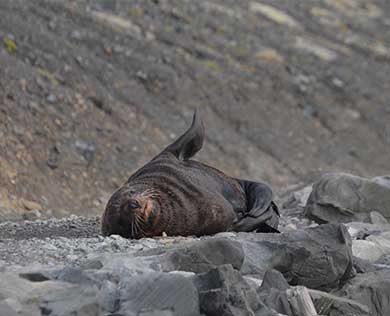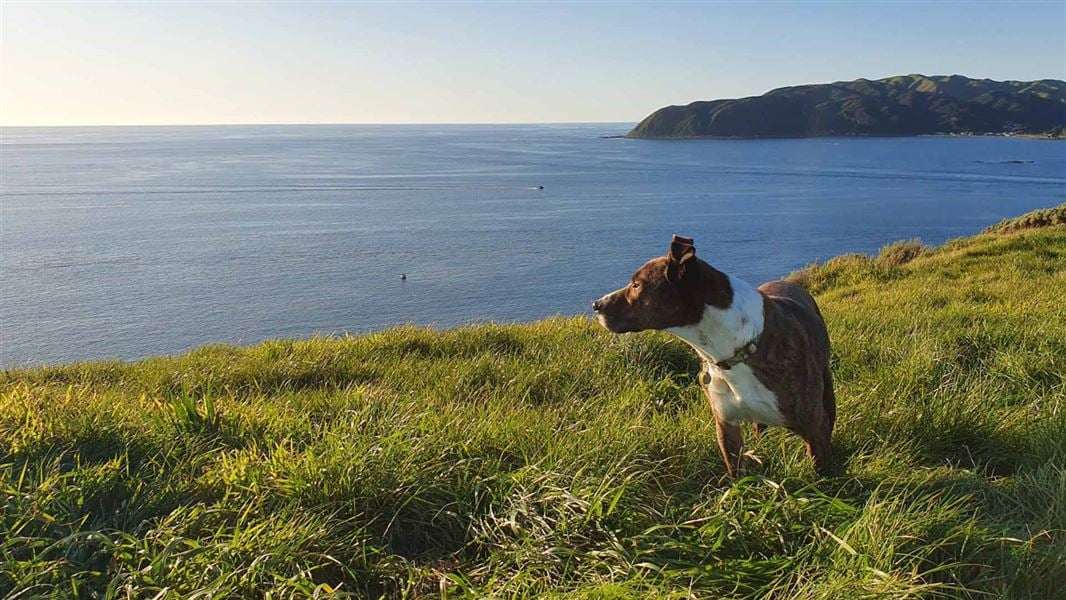On this page:
Where to look out for wildlife
Birds, seals, and other wildlife are common on Wellington/Kapiti beaches. But there are three main species to look out for when dog walking.
Little penguin/kororā

Kororā often roost and nest in rocky areas
Image: Shellie Evans | ©
Kororā live and breed all around our coastlines, from Northland to Stewart Island/Rakiura and most places in-between. They’re vulnerable when moving between the sea and their nest at dusk, so be aware on your after-work adventures with your dog.
Wellington/Kapiti is home to many kororā. Though you may not see them as they can be very secretive. They're widespread around the urban coastline so keep an eye out.
Be extra alert around:
- Moa Point
- Mirimar Peninsula
- Wellington waterfront
Fur seal/kekeno

Example of fur seal/kekeno likely spot on the beach
Image: Ian Banatoski | ©
Fur seals breed and haul-out (rest) on rocky coastlines sometimes in large numbers. In winter you may see them as solo adventurers on the beach and on sides of a coastal track.
They blend into their surroundings. Your dog might smell one long before you know it’s there, so keep alert.
In winter especially, kekeno can be found opportunistically almost anywhere on the Wellington coastline. Opportunistically means they can show up anywhere – stay vigilant. They range from rocky shores to beaches, sometimes even in someone’s backyard. These seals will rest anywhere they can.
But they’re found usually at these places:
- The haul-out area at Turakirae Head.
- The haul-out area at Sinclair Head/Devil’s Gate.
- The haul-out area at Tongue Point/Karori Lighthouse.
Other species of seals
Other species of seals haul out (rest) on our coastlines. There have been more of them recently such as the subantarctic fur seals and leopard seals.
Subantarctic fur seals are vulnerable to disturbance. Those visiting our coastline are usually young and inexperienced and just swam a large distance.
Other seals in the Wellington region could turn up anywhere on the coastline at any time. Stay vigilant.
Some notable sightings have included locations like:
- Lyall Bay
- Ōwhiro Bay
- Wellington waterfront
- Ngāti Toa Domain
Specific ways to keep wildlife safe
More ways to keep wildlife safe when with your dog on beaches.
Get a Lead the Way lead
Lead the Way leads convey visually what temperament your dog has. By using these leads while out on walks, you're also advocating for the protection of our precious wildlife.
Dogs on conservation land
Different conservation areas have different rules. Some areas allow dogs, others require a permit, and some do not allow dogs at all.
Tracks, campsites, and hunting areas you can take your dog on conservation land.
